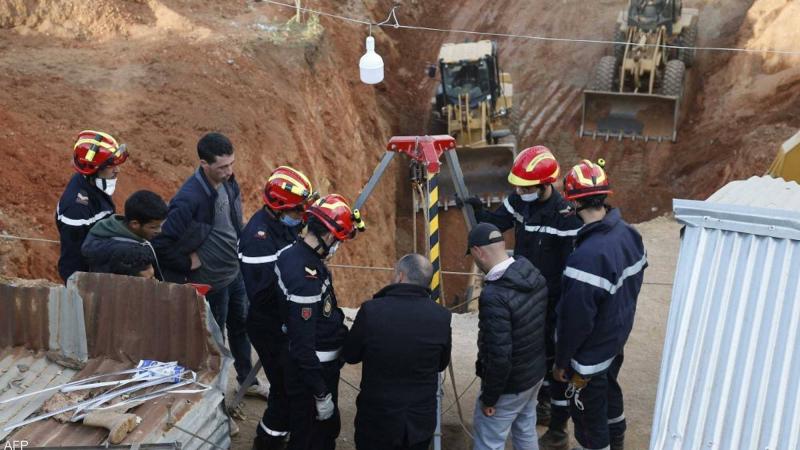The circulation of photos and videos of child Rayan, who lies at the bottom of a well with a pale face, bruises, and traces of blood, has sparked widespread emotional reactions and condemnation regarding the publication of such images. Media outlets quickly picked up the disturbing photos of the child in a dire state, rushing to share them to achieve high viewership on social media channels.
While experts criticized the exploitation of the child's images, the Moroccan Press Council urged journalists to adhere to journalistic ethics while covering the rescue operation of child Rayan.
### The Need for Professionalism
In a commentary on the issue, Dr. Nadia Lmehidi, an expert in media and communication, stated that broadcasting images of Rayan in distress under the rubble is far from respectable journalism. Lmehidi told "Sky News Arabia" that the image of Rayan inside the well is intended solely for the rescue professionals to assist in the plan developed by the authorities for his extraction, and it is not meant for public viewing.
The journalism professor at the Higher Institute of Journalism and Communication in Rabat emphasized that publishing images of Rayan in that condition disregards professional ethics, which mandate the protection of individuals' rights to their image. She also warned that the clustering of many journalists in an uncontrolled manner at the accident site could hinder the efforts of rescue operations.
Lmehidi added, "Child Rayan will hopefully come out safe and grow up not liking the images published of him in that state. The digital world has a memory that does not fade. What is the benefit of publishing such bloody images? Journalists should address issues of public interest instead of exploiting situations to create sensationalism at the expense of professionalism."
She concluded that they "hope for Rayan's safe recovery, as we also hope for the press to succeed in the challenging professional test it is currently undergoing."
### The Pursuit of Sensationalism
The National Press Council, in a statement seen by "Sky News Arabia," expressed deep regret over "shameful practices" that accompanied the coverage of the attempts to rescue child Rayan, who fell into a well in the Chefchaouen region. They noted numerous violations of the journalistic ethics code, committed by some online newspapers.
The council, which oversees the self-regulation of the journalism and publishing sector as per constitutional provisions, pointed out that some media outlets disregarded "the humanitarian principles outlined in the mentioned code, which should be adhered to by media organizations and professional journalists, especially during crises and tragedies that should not, under any circumstances, become a means for profit and cheap sensationalism to boost viewership or utilize compassionate tragedies for gain."
According to the same source, several media outlets have committed violations such as depicting child Rayan in the bottom of the well with a bloody face in a difficult humanitarian situation, which harms the feelings of his family, in addition to violating the right to one's image.
### Exploitation of Minors
The National Press Council also highlighted that it is unacceptable to photograph and interview minors who are in an unnatural human condition due to the impact of an incident concerning a minor's fate, as well as publishing images of minors through video clips in the vicinity of the rescue operation for gratuitous sensationalism, without considering their psychological status or age.
The council noted that some online newspapers conducted interviews with the child's family, explicitly stating that the filming would increase viewership, leveraging the family's psychological state by asking questions unrelated to journalistic standards, in an outright commercial exploitation, taking advantage of the great anxiety and sorrow of Rayan's family as they awaited the success of the rescue operation.
This behavior represents a flagrant violation of the second axis of the journalistic ethics code regarding responsibility towards society, particularly its first clause concerning the respect of human dignity.
The council called upon various media outlets to adhere to the ethics of the profession and its noble principles, warning that the coverage of humanitarian tragedies is a primary test of how well the press respects its social responsibility and strives to avoid turning tragedies into means for profit and exploitation.




